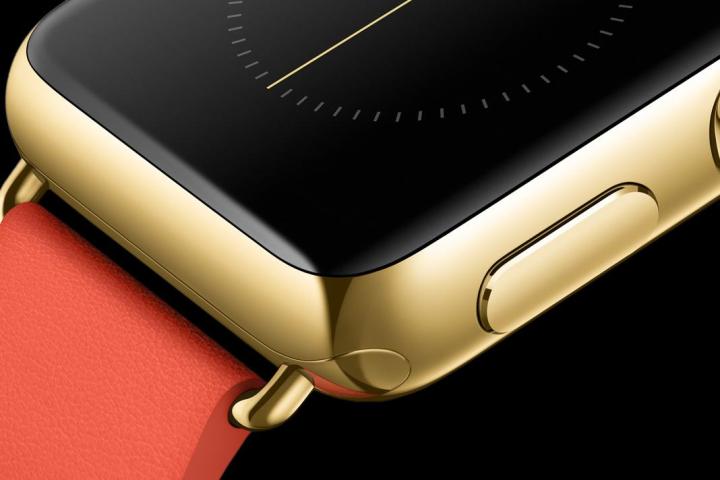
Honestly, I don’t remember ever spending more than $20 bucks on a watch, and those $20 watches never suffered from planned obsolescence. Indiglo is for life.
I’m certainly among those who are wary about Tim Cook’s apparent courting of oil barons with the Vertu approach to gadget design, but neither one of us really want to sit through another column by an underpaid tech journalist listing reasons he won’t partake in the Apple Watch Edition. Besides, “food” and “rent” seem compelling enough.
Manufacturers accustomed to creating agnostic slates will have to be mindful of some real-world concerns.
Apple is savvy enough to realize that a $17,000 watch isn’t for everyone (though whether it’s actually for anyone has yet to be seen). The surprising part is Apple’s keen awareness that there will be no one-size-fits-all model this time around, no matter how hard it tries.
When the Watch launches next month, there will be two size options (38mm and 42mm), three different models with two different finishes apiece, and at least six different bands. Even if current rumors about the company launching an additional three models in fall never come true, that’s still a pretty decent starting point.
It’s particularly striking given the fact that the company’s history of starkly limiting choice. Apple usually prefers to focus on a single device, rather than, say, Samsung’s shotgun blast of product launches. But over the last few years, increased competition has seen the company experimenting a bit more with additional options like the iPhone 5C or 6 Plus.

With wearables, options need to be the rule, not the exception. As I mentioned last week, I’ve been wearing a smartwatch (whose name I won’t disclose at present) for a few weeks now. I’m a 5-foot-11 human male, and you know what? It still feels a bit big on me. I can only imagine how the thing feels on smaller wrists.
For all of the silly attempts to launch gender-specific devices, the fact of the matter is that a good, mainstream smartphone is a neutral thing. Odd-sized phablets aside, your height likely doesn’t have a tremendous amount of bearing on the kind of phone you choose. But wearing technology isn’t like holding it. Manufacturers accustomed to creating agnostic slates will have to be mindful of some real-world concerns.
We’re still pretty far away from a world in which there’s a device for every wrist.
Size is certainly one of these. Smartwatches not only have to fit, they have to be comfortable if companies expect users to wear them 10 hours a day (we’ll have to save the battery-life conversation for another day). The watch form factor is at least more flexible than a smartband, but as ever with mobile devices, the screen (er, face) is the thing.
Then there’s the fashion element. Unlike a smartphone, a smartwatch is almost constantly visible. And if you spend $200 or, God forbid, $17,000 on a gadget, you’re going to want to get as much use out of it as possible. That means wearing the same device for a morning jog as a late-night dinner party.
Granted, there’s a certain amount of inherent customization with a watch whose face can be changed several times a day, but that’s just a small piece — a piece that will likely be turned off much of the time to save battery.
Ordinary wristwatches became ubiquitous, in part, because so many different companies make so many different devices for so many different kinds of people. Both of my parents are watch wearers, but I’m having trouble attempting to imagine a watch they’d both wear, given, among plenty of reasons, the foot or so height difference between the two of them.
Some variety will naturally occur. With enough companies in the race, there’s bound to be some product diversity as manufacturers attempt to distinguish themselves from the competition, but if the current crop of smartwatches are any indication, we’re still pretty far away from a world in which there’s a device for every wrist.

If there’s one immediate lesson to take from the Apple Watch, it’s that diversity starts at home. The more options available, the wider the potential market.
Bands are the easiest aspect to customize, either by companies making a collection of their own bands, or making a watch use standard-size bands. The watch itself is, naturally, more difficult to customize, as the one piece that can’t be swapped out.
So choose carefully. Because unlike regular watches, it’s hard to imagine too many people owning several models of the same smartwatch — well, anyone but those aforementioned oil barons.


